Automation is at the heart of modern marketing and sales. HubSpot workflows enable you to automate tasks, streamline communication, and create personalized experiences for your customers.
Advanced workflows go beyond simple email sequences to incorporate multi-channel marketing, deal-based automations, and even custom coded workflows that leverage the HubSpot API. In this guide, we’ll explore the full spectrum of HubSpot workflows—from setting them up to optimizing them for different teams.
This article is structured to help you:
- Understand the basics and benefits of HubSpot workflows.
- Set up and customize workflows to fit your unique business processes.
- Explore advanced techniques, including deal-based, email, and marketing workflows.
- Learn best practices, common pitfalls, and optimization strategies.
- Draw inspiration from real-world examples and case studies.
Understanding HubSpot Workflows

Before diving into the advanced techniques, it’s important to understand what HubSpot workflows are and why they matter. Essentially, HubSpot workflows are automated sequences of actions triggered by specific conditions or events.
These workflows can help you manage leads, engage customers, and even automate complex sales processes.
What Are HubSpot Workflows?
At their core, workflows are a series of automated actions designed to move contacts through your marketing and sales funnel. They can be triggered by various events such as:
- Form submissions
- Email interactions
- Changes in contact properties
Common actions include sending emails, updating contact properties, or assigning tasks to team members.
Setting Up Advanced Workflows in HubSpot

Creating workflows in HubSpot is a structured process that can be broken down into clear, manageable steps.
Here’s a step-by-step guide to help you create effective workflows:
How to Create Workflows in HubSpot: Step-by-Step Guide
Creating workflows in HubSpot is a straightforward process, but it requires attention to detail to ensure that each element is configured correctly.
Below is a comprehensive, step-by-step guide to help you navigate the creation process.
Access the Workflows Tool
To begin creating workflows, log in to your HubSpot account. From your main dashboard, go to the Automation tab and select Workflows. Then, click the Create Workflow button to start a new workflow.
Choose Your Workflow Type
HubSpot offers four types of workflows: Contact-based, Deal-based, Company-based, and Ticket-based. The type you choose depends on the specific goals you’re trying to achieve:
- Contact-based workflows are ideal for marketing automation (e.g., lead nurturing or email marketing).
- Deal-based workflows help automate tasks and notifications based on the status of deals in your pipeline.
- Company-based workflows automate processes for companies in your CRM, such as sending customized offers or updates.
- Ticket-based workflows are best for customer service teams, ensuring timely follow-up and issue resolution.
Define Enrollment Triggers
Enrollment triggers are the conditions under which a contact or deal will enter your workflow. These can be based on actions or attributes, such as form submissions, lifecycle stage changes, or even a specific page visit. It’s important to choose triggers that reflect the points in the customer journey where automation will be most impactful.
Set Up Actions
Once you’ve defined your triggers, you can set up actions that will take place when the workflow is triggered. These can include:
- Sending emails: Automate your email marketing and lead nurturing with personalized content.
- Assigning tasks: Automatically assign tasks to team members based on the contact’s actions or behavior.
- Updating properties: Automatically update contact or deal properties, such as lifecycle stage, after specific actions.
- Creating follow-up reminders: Ensure your team is reminded to follow up with high-value leads or deals.
Incorporate If/Then Branching Logic
One of HubSpot’s powerful features is its ability to segment workflows using if/then branching logic. This allows you to create multiple paths in your workflow, tailoring the experience based on contact behaviors or attributes. For example, you could send one set of emails to leads who clicked on a product page and another set to those who completed a form.
Test and Activate
Before activating your workflow, it’s essential to run thorough tests. Ensure that all triggers, actions, and conditional logic work as expected. HubSpot provides a “Test” feature that allows you to simulate the workflow with a sample contact. Once everything is running smoothly, activate the workflow and monitor its performance over time.
Deal-Based Workflows in HubSpot: Automating Sales Pipelines

For sales teams, deal-based workflows are invaluable for automating the sales pipeline. These workflows help manage deal stages and ensure that sales reps receive timely notifications and task assignments.
Implementation Highlights:
- Define Deal Stages:
Customize your sales pipeline stages (e.g., Lead, Qualified, Proposal Sent, Closed-Won) to mirror your sales process. - Automate Task Creation:
Automatically assign follow-up tasks when a deal advances to a new stage, reducing manual data entry and ensuring consistency. - Set Up Notifications:
Configure notifications for key actions (e.g., nearing close dates) so that your team can prioritize high-value opportunities. - Automate Post-Closure Actions:
Once a deal is marked as Closed-Won, trigger actions such as thank-you emails or customer onboarding sequences.
By integrating deal-based workflows into your sales process, you can streamline operations and improve your team’s efficiency in converting leads into customers.
Optimizing Workflows for Different Teams
Different teams within your organization—marketing, sales, and customer service—have unique requirements. Optimizing your workflows to address these differences can lead to significant improvements in efficiency and performance.
Here's the content in table format:
|
Team |
Workflow Type |
Description |
|
Marketing Teams |
Set up workflows that automatically score leads and deliver personalized content. |
|
|
Campaign Automation |
Design workflows that manage multi-step campaigns, ensuring a consistent customer journey. |
|
|
Event-Triggered Engagement |
Automate follow-ups based on specific customer interactions, such as webinar attendance or content downloads. |
|
|
Sales Teams |
Deal Management |
Implement deal-based workflows that automate follow-up tasks and notifications, keeping deals moving smoothly. |
|
Task Assignment |
Automatically assign tasks to sales reps based on deal stage changes or customer actions. |
|
|
Performance Reporting |
Integrate workflow data with CRM reporting tools to monitor sales metrics and identify bottlenecks. |
|
|
Customer Service |
Ticket Routing |
Automate the assignment of support tickets to the appropriate team members. |
|
Follow-Up Sequences |
Ensure timely updates and resolutions by triggering follow-up actions based on ticket status. |
|
|
Feedback Collection |
Use workflows to send satisfaction surveys and gather customer feedback after support interactions. |
Optimizing workflows for each team ensures that every department benefits from automation, resulting in improved coordination and overall performance. Learn about different types of HubSpot consulting services and their advantages!
Examples of Advanced HubSpot Workflows

Seeing practical examples can provide clarity and inspiration for your own automation projects. Here are a few common use cases:
HubSpot Workflows Examples for Common Business Processes:
- Customer Onboarding:
Create a series of welcome emails, training materials, and check-ins to ensure new customers have a smooth onboarding experience. - Lead Nurturing Sequences:
Develop workflows that deliver a mix of educational content, case studies, and product information to guide prospects through the buyer’s journey. - Event Follow-Ups:
Automatically send thank-you emails and relevant resources after webinars or live events.
Case Studies of Successful Automation:
- Sales Conversion Boost:
A mid-sized SaaS company implemented deal-based workflows to automate follow-ups and task assignments, resulting in a 25% increase in sales conversions. - Enhanced Engagement:
Another organization used personalized email workflows to reduce lead drop-off rates by 30%, showcasing the power of tailored automation.
Inspiration from the HubSpot Academy Workflows Library:
- Explore templates and case studies available in the HubSpot Academy to gather ideas and best practices that have proven successful across various industries.
These examples illustrate how advanced workflows can be adapted to meet diverse business needs and drive tangible results.
Tips for Maximizing Efficiency with HubSpot Workflows

Achieving high efficiency with HubSpot workflows requires attention to detail and continuous improvement. Here are some actionable tips:
- Keep It Simple: Design workflows that are straightforward and avoid unnecessary complexity.
- Regular Testing: Perform A/B tests and analyze performance metrics to refine your workflows over time.
- Clear Documentation: Maintain detailed documentation of workflow steps, triggers, and actions to ensure consistency and ease of management.
- Agility: Stay flexible and be prepared to adapt workflows based on evolving customer behavior and business needs.
Maximizing efficiency through these best practices can significantly enhance your automation strategy, leading to better performance and smoother operations.
Best Practices for Creating Workflows HubSpot Users Love
Creating workflows that resonate with users is a blend of technical expertise and understanding customer needs. Consider these best practices:
- Focus on Personalization: Use dynamic content and segmentation to tailor workflows for individual users.
- User-Centric Design: Build workflows with the end-user in mind, ensuring that every touchpoint adds value.
- Data-Driven Adjustments: Regularly review analytics and feedback to make informed adjustments.
- Avoid Overcomplication: Simplify where possible to reduce potential errors and enhance usability.
By following these best practices, you’ll create workflows that not only drive efficiency but also enhance user satisfaction and engagement.
Common Mistakes to Avoid in HubSpot Workflow Automation
Even the most sophisticated workflows can falter if common pitfalls are not addressed. Here are some mistakes to steer clear of:
- Overcomplicating the Workflow: Too many branches or conditions can confuse users and lead to errors.
- Neglecting Data Privacy: Ensure your workflows comply with data protection regulations and respect user privacy.
- Ignoring Performance Analytics: Failing to monitor workflow performance can result in missed opportunities for optimization.
- Lack of Personalization: Generic workflows that do not account for individual user behavior may reduce engagement.
Avoiding these pitfalls is critical to maintaining an efficient, reliable automation system that truly benefits your business.
Leveraging HubSpot Workflows Tools and Resources
HubSpot offers a variety of tools and resources designed to support your workflow automation efforts. These include:
- HubSpot Analytics: Use built-in analytics to monitor workflow performance and identify areas for improvement.
- A/B Testing Tools: Continuously test different elements of your workflows to refine and optimize performance.
- HubSpot Academy: Access free training modules, certifications, and workflow examples to stay informed on best practices.
- Online Communities and Webinars: Engage with other HubSpot users to share insights, ask questions, and discover innovative solutions.
Leveraging these tools and resources can significantly enhance your ability to create and maintain workflows that drive tangible business results.
FAQ
What Are Hubspot Workflows?
HubSpot workflows are automated sequences designed to streamline processes by triggering actions based on specific conditions or events. They are used to automate marketing, sales, and customer service tasks.
How Do Hubspot Workflows Differ From Sequences?
While both automate communication, sequences are typically used for one-to-one follow-up (often in sales), whereas workflows offer more complex, multi-step automation with branching logic, making them suitable for broader processes.
Can I Create Custom Coded Workflows In Hubspot?
Yes. Custom coded workflows allow you to leverage the HubSpot API to create highly specialized automation processes that extend beyond standard actions.
How Often Should I Review My Workflows?
Regular reviews and testing—at least quarterly—are recommended to ensure your workflows remain aligned with business goals and customer behavior.
Optimize Your HubSpot Workflows the Right Way
Advanced HubSpot workflows are a cornerstone of effective automation in today’s fast-paced digital environment. By understanding the fundamentals and mastering advanced techniques—whether through deal-based automation, personalized email campaigns, or custom coded solutions—you can create robust systems that drive efficiency, engagement, and measurable business growth.
As you integrate and optimize workflows across different teams, remember that continuous testing and refinement are key to staying ahead of evolving customer needs. By following the best practices outlined in this guide and avoiding common pitfalls, you can develop workflows that not only streamline operations but also enhance the overall customer experience.
Ready to transform your automation strategy with a HubSpot agency?
Contact Roketto today to learn how our expert team can help you design, implement, and optimize advanced HubSpot workflows that drive real results.
Let’s work together to elevate your marketing, sales, and customer service to new heights.

Garreth Aspeling
Garreth has 6 years of experience crafting compelling SEO-based blog posts and articles for various audiences. From cryptocurrency to SaaS and everything in between, Garreth always creates high-quality content for his clients. He is also engrossed in books, hiking trails, and spending time with loved ones.











2.png)
2.png)









